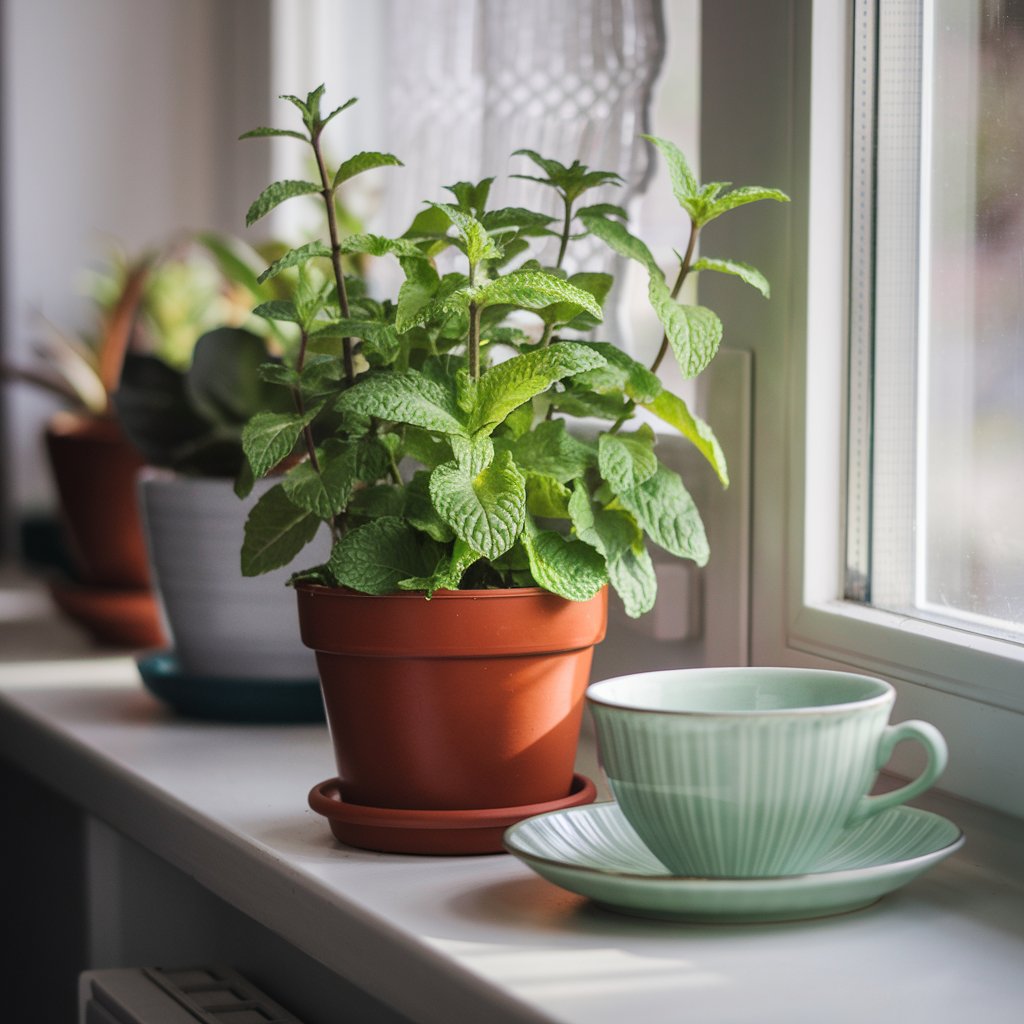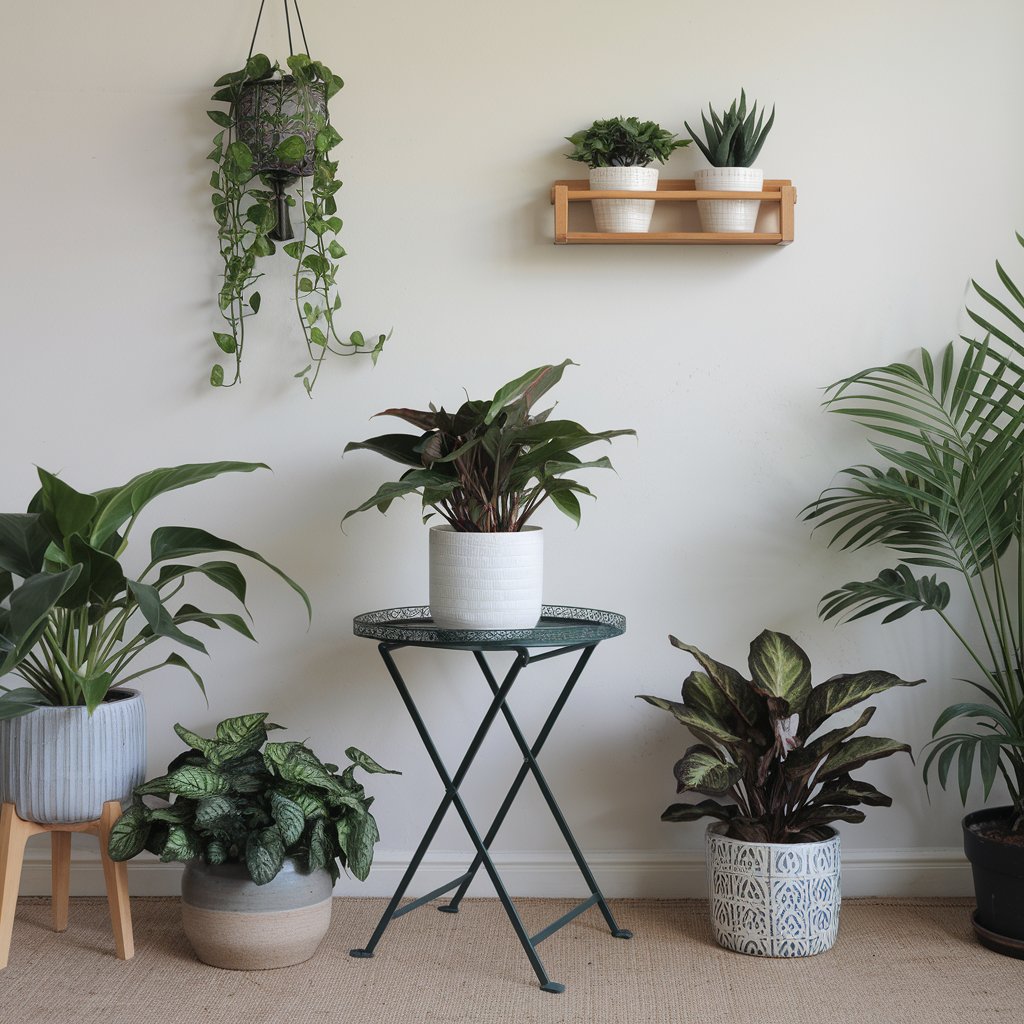Spearmint is a versatile herb perfect for indoor herb gardening. It adds a refreshing aroma to your kitchen and provides endless opportunities for fresh, flavorful teas, garnishes, and more. Here’s how to grow and care for this herb indoors.
Why Choose Spearmint?
Spearmint is robust, grows quickly, and thrives indoors. It’s perfect for beginners, offering a steady supply of fresh mint at home without needing a large garden space.Here’s why you should consider growing mint indoors:
Low Maintenance: With minimal effort, spearmint can thrive and produce a bountiful harvest.
Convenience: Fresh mint is always at your fingertips, perfect for tea, cooking, or refreshing drinks.
Compact Growth: Spearmint grows well in pots, making it ideal for small spaces like windowsills or countertops.
Year-Round Freshness: Indoor gardening allows you to enjoy fresh mint leaves even in the colder months.
How to Grow Mint Indoors
Growing spearmint indoors requires the right setup and care. Follow these steps to ensure your plant thrives:
1. Select the Right Container
Spearmint is known for its spreading roots, so choose a medium-sized pot with good drainage. A pot with a saucer is ideal to catch any excess water and prevent messes indoors.
2. Prepare the Soil
Mint prefers nutrient-rich, well-draining soil. A mix of potting soil and compost works well. You can also add some perlite or sand to improve aeration and drainage.
3. Light Requirements
Place your spearmint pot near a window that receives indirect sunlight for 4–6 hours daily. If your home doesn’t get enough light, invest in a grow light to mimic sunlight and support healthy growth.
4. Watering Needs
Keep the soil consistently moist but not waterlogged. Spearmint thrives in slightly damp soil, so check regularly and water when the top inch of soil feels dry.
5. Temperature and Humidity
Mint prefers moderate temperatures (65–75°F) and a slightly humid environment. Avoid placing the pot near heating vents or cold drafts.
Propagating Spearmint: A Simple Process
Propagating spearmint is one of the easiest ways to grow new plants. Here’s how you can propagate spearmint at home:
- Take a Cutting: Snip a healthy stem, about 4–6 inches long, just below a node.
- Remove Lower Leaves: Strip the lower leaves to leave a clean stem for rooting.
- Place in Water: Submerge the stem in a glass of water, ensuring no leaves are underwater.
- Wait for Roots: Within a week or two, roots will begin to form.
- Transfer to Soil: Once the roots are about an inch long, plant the cutting in a pot with moist soil.
This simple method ensures a steady supply of fresh mint at home.
Essential Mint Care Tips
To keep your spearmint thriving, follow these care guidelines:
- Regular Pruning
Prune your spearmint regularly to encourage bushy growth and prevent legginess. Harvest leaves frequently to promote new shoots. - Fertilizing
Feed your spearmint every 4–6 weeks with a balanced, water-soluble fertilizer. Avoid over-fertilizing, as this can lead to weaker flavors. - Watch for Pests
Although mint is hardy, it can attract pests like spider mites or aphids. Check your plant periodically, and if pests appear, wipe the leaves with a mild soap solution. - Repot as Needed
If your mint outgrows its pot or the soil becomes compacted, repot it into fresh soil and a slightly larger container to give the roots more room to spread.
Benefits of Indoor Herb Gardening with Spearmint
Growing mint indoors goes beyond having a supply of fresh leaves. Here are some additional benefits:
- Natural Air Freshener: Spearmint’s invigorating aroma helps refresh your living space.
- Health and Wellness: Fresh spearmint can be brewed into tea, known for its digestive and soothing properties.
- Aesthetic Appeal: Spearmint’s vibrant green leaves add a touch of nature to your home décor.
- Cost-Effective: Instead of buying store-bought herbs, you’ll have a consistent and free supply at home.
Common Challenges and How to Overcome Them
Growing spearmint indoors is relatively easy, but some challenges may arise. Here’s how to tackle them:
- Overwatering
Issue: Yellowing leaves or root rot.
Solution: Ensure proper drainage and water only when the soil feels dry to the touch. - Insufficient Light
Issue: Leggy growth with weak stems.
Solution: Move the plant to a sunnier spot or use a grow light. - Pest Infestation
Issue: Small bugs on leaves.
Solution: Treat with insecticidal soap or wipe leaves with a damp cloth. - Lack of Pruning
Issue: Woody stems and reduced leaf production.
Solution: Regularly trim back stems to maintain vigorous growth.
Harvesting and Using Spearmint
Once your plant is established, you can start harvesting spearmint leaves. To harvest:
- Use scissors to snip leaves from the top to encourage new growth.
- For optimal flavor, harvest in the morning when the essential oils are at their peak concentration.
- Avoid removing more than one-third of the plant at a time to keep it healthy.
Spearmint leaves can be used fresh or dried. Add them to teas, desserts, or savory dishes for a burst of flavor. You can also freeze leaves in ice cubes for later use.
Final Thoughts
Spearmint is a fantastic addition to any indoor herb gardening setup. Its ease of growth, refreshing aroma, and versatility in the kitchen make it a must-have for gardeners of all skill levels. By following these steps and tips, you’ll enjoy a thriving plant that provides fresh mint at home all year round.
So, get started today! With a little care and attention, your spearmint will flourish, turning your home into a green oasis of flavor and fragrance.
visit also How to Plant Spearmint in Your Kitchen for Fresh and Delicious Spearmint Tea




